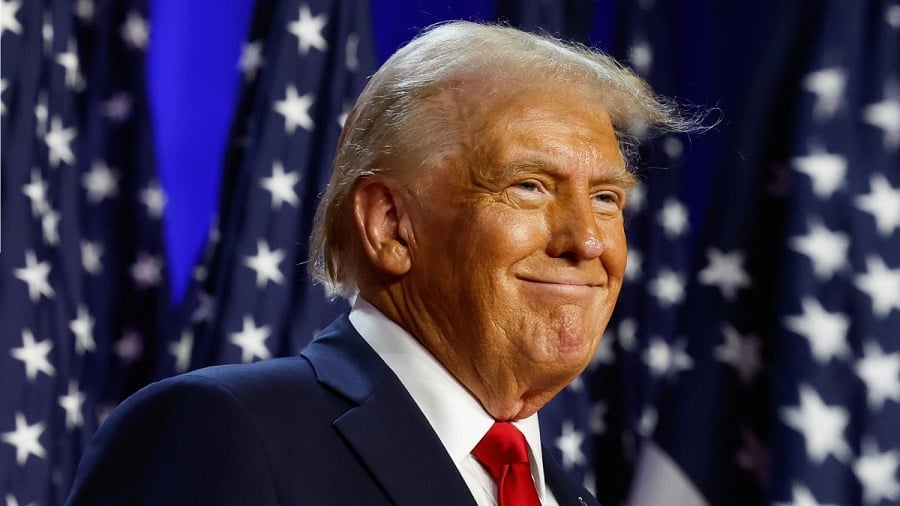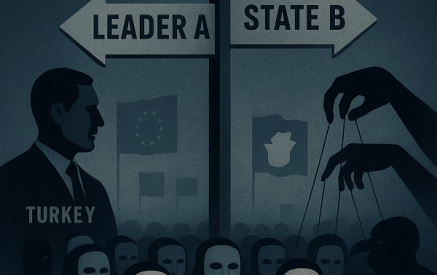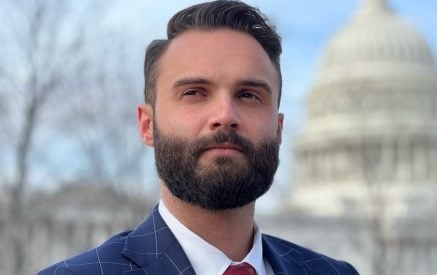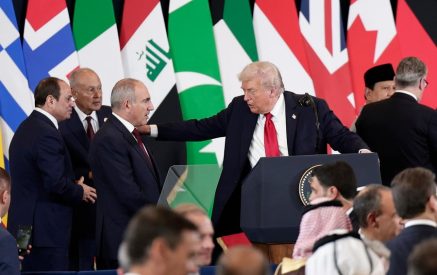The United States remains the only superpower in the contemporary world, a position where changes in administration can influence global and regional dynamics. After the announcement of the 47th President of the United States for the 2025–29 term, the so-called “Trump effect” was observed worldwide. In the case of Russia, will this window of opportunity expand or, on the contrary, close?
Russia’s Key Foreign Policy Priorities
Russia’s foreign policy has significantly changed since 2022, with new strategic priorities emerging. These priorities are rooted in concerns about national security.
Regarding the United States, Moscow’s priorities fall into three main categories:
Read also
- Strategic stability: This includes treaties limiting strategic weapons, their delivery systems, and the number of nuclear warheads.
- The war in Ukraine: Russia aims to secure a neutral status for Ukraine, influence Kyiv’s domestic and foreign policy, and solidify control over “new territories.”
- Sanctions relief: With over 15,000 sanctions currently imposed on Russia, their removal is critical for economic development.
Globally, Russia is focused on fostering a multipolar world in which the United States no longer dominates. In this context, Moscow seeks to diminish US influence in Eurasia and establish the post-Soviet space as a core sphere of its influence.
How US Policy Toward Russia Could Change
Two fundamental approaches to US foreign policy under Trump can be outlined: continuity with the 2017–21 course or an adjustment to account for recent global changes. The first approach is more straightforward for analyzing the main directions of US foreign policy, as it provides predictability. However, Trump’s unpredictable nature complicates this process. The second approach is more difficult to forecast due to numerous potential scenarios. Thus, as a baseline, we will consider Trump’s initial approaches during his first term and adjust them in light of factors such as the composition of his cabinet.
The National Security Strategy from Trump’s administration highlights Russia’s ambitions in the context of containment. This document describes Russia as an ally of China, noting that: “Russia seeks to restore its great power status and establish spheres of influence near its borders, aims to weaken US influence in the world and divide us from our allies and partners, views NATO and the EU as threats, [and is] investing in new military capabilities, including nuclear systems that remain the most significant existential threat to the United States.” Despite these concerns, Trump’s first term saw no decisive confrontations with Russia. Instead, Washington pursued a “containment and dialogue strategy” to prevent closer ties between Moscow and Beijing, the United States’ primary rival. However, the West’s isolation of Russia ultimately drove it closer to China. A joint statement issued by Moscow and Beijing in 2024 underscores their shared vision for Eurasia and global affairs.
The appointments of Marco Rubio as Secretary of State and Mike Waltz as National Security Advisor offer insight into future US foreign policy under Trump. Rubio has indicated that negotiations are the only path to resolving the conflict in Ukraine. On one hand, this suggests the US may shift away from extensive military support for Ukraine, reallocating resources to counter China. On the other hand, it does not imply acquiescence to all of Russia’s demands. Instead, nonmilitary tools could be deployed to pressure Moscow, such as efforts to lower oil and gas prices or enforce stricter sanctions to close loopholes.
As foreign policy hawks, Rubio and Waltz prioritize addressing China’s threat. In this context, a key US objective could be to disrupt Beijing’s alliances, particularly with Moscow. Creating negotiation tracks on critical issues—such as Ukraine and broader security concerns—could reduce Russia’s dependence on China while opening pathways for agreements with Washington.
Russia’s Policy After Donald Trump’s Victory
In Russia, the Trump administration’s acknowledgment of the risks posed by the Ukraine conflict escalating into a direct clash between Russia and the West is viewed positively. However, Moscow has no illusions about resolving the conflict solely on its terms. A proposed plan to freeze the front line, with British and European forces deployed and Ukraine kept out of NATO for 20 years while receiving parallel military assistance, is seen as merely delaying a larger war. If Russia rejects the US proposal, two scenarios emerge: dialogue or confrontation. In the first scenario, Washington might consider Russia’s interests, mainly if the United States aims to weaken the Moscow-Beijing alliance. In the second scenario, the US could intensify pressure through sanctions or increased arms supplies to Ukraine to compel the Kremlin to accept its terms. Russia will likely leverage its frontline successes to bolster its negotiating position amid this uncertainty. For instance, in October 2024, Russia reported record advances on the Ukrainian front since March 2022.
Russia appears more inclined toward dialogue with the United States on the Ukraine issue, provided such a possibility remains viable. However, Moscow insists on security guarantees “on the ground,” not merely “on paper.” While Trump’s proposed plan is deemed unacceptable, Russia must present alternative options, which could become a key focus for its diplomacy in the coming months.
Simultaneously, Moscow will prioritize easing the sanctions regime. Even if the conflict is frozen, complete removal of Western sanctions is unlikely. Russia may target specific measures, such as lifting the SWIFT ban on its banks and resuming direct flights between Russia and Europe, which could significantly benefit its economy.
Another priority for Russia is strategic stability, which involves updating arms control treaties, reducing nuclear arsenals, and limiting NATO’s military infrastructure. The suspension—not withdrawal—of the START III treaty in February 2023 signals Moscow’s interest in dialogue rather than confrontation. Nonetheless, Trump’s first term saw the US withdraw from the INF Treaty and refuse to extend START III, complicating future negotiations. Moscow’s adjustments to its nuclear doctrine further underscore shifts that must be addressed in any talks.
On NATO, Russia will continue advocating for the alliance’s diminished role in European security and a reduced US presence “on the ground.” These demands align with Trump’s perspective, which calls for European nations to invest more in their defense rather than rely on the United States.
A potential reduction in US involvement in the post-Soviet space could reshape the region’s power dynamics. In such a scenario, the South Caucasus might become a sphere of influence for Iran, Turkey, and Russia. A “gentleman’s agreement” between Moscow and Washington could reduce US and EU engagement, although Turkey’s role could increase. If the conflict in Ukraine is frozen and Russia and the US engage in strategic dialogue, Moscow would likely feel more assertive in the post-Soviet space, including the South Caucasus. States in the region with strained ties to Moscow would have fewer opportunities to hedge risks through external partnerships.
This potential “window of opportunity” could strengthen Russia’s regional foreign policy, enabling it to promote multilateral formats such as the Eurasian Economic Union (EAEU), the Shanghai Cooperation Organization (SCO), and the Collective Security Treaty Organization (CSTO). Additionally, Moscow could enhance bilateral relations, reasserting itself as the dominant mediator in regional conflicts. This would reinforce its position as a central player in the regional order.
Sergei Melkonyan, Research Fellow, APRI Armenia























































